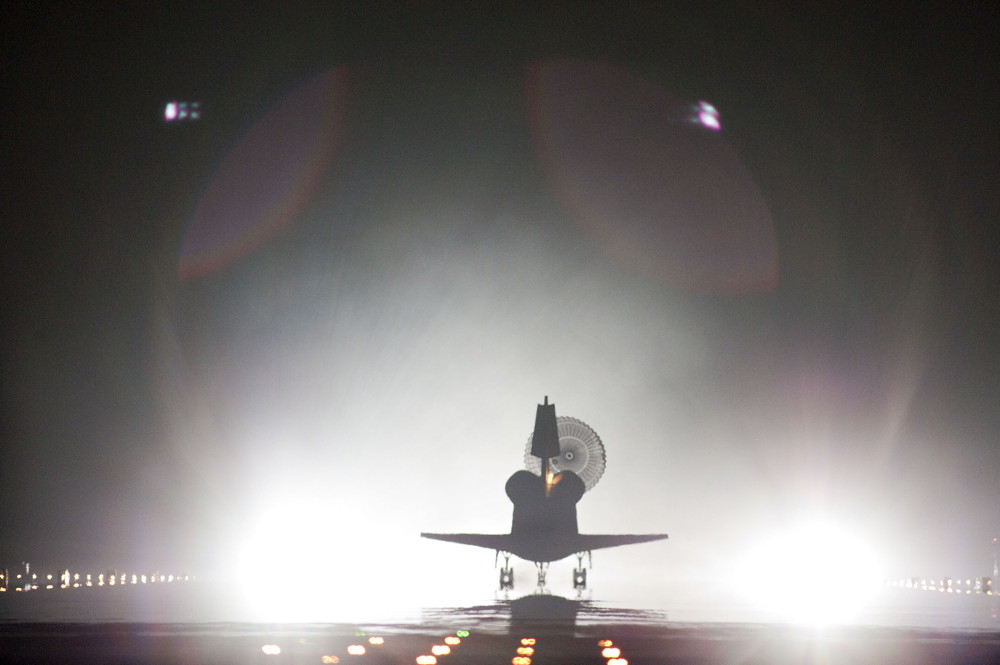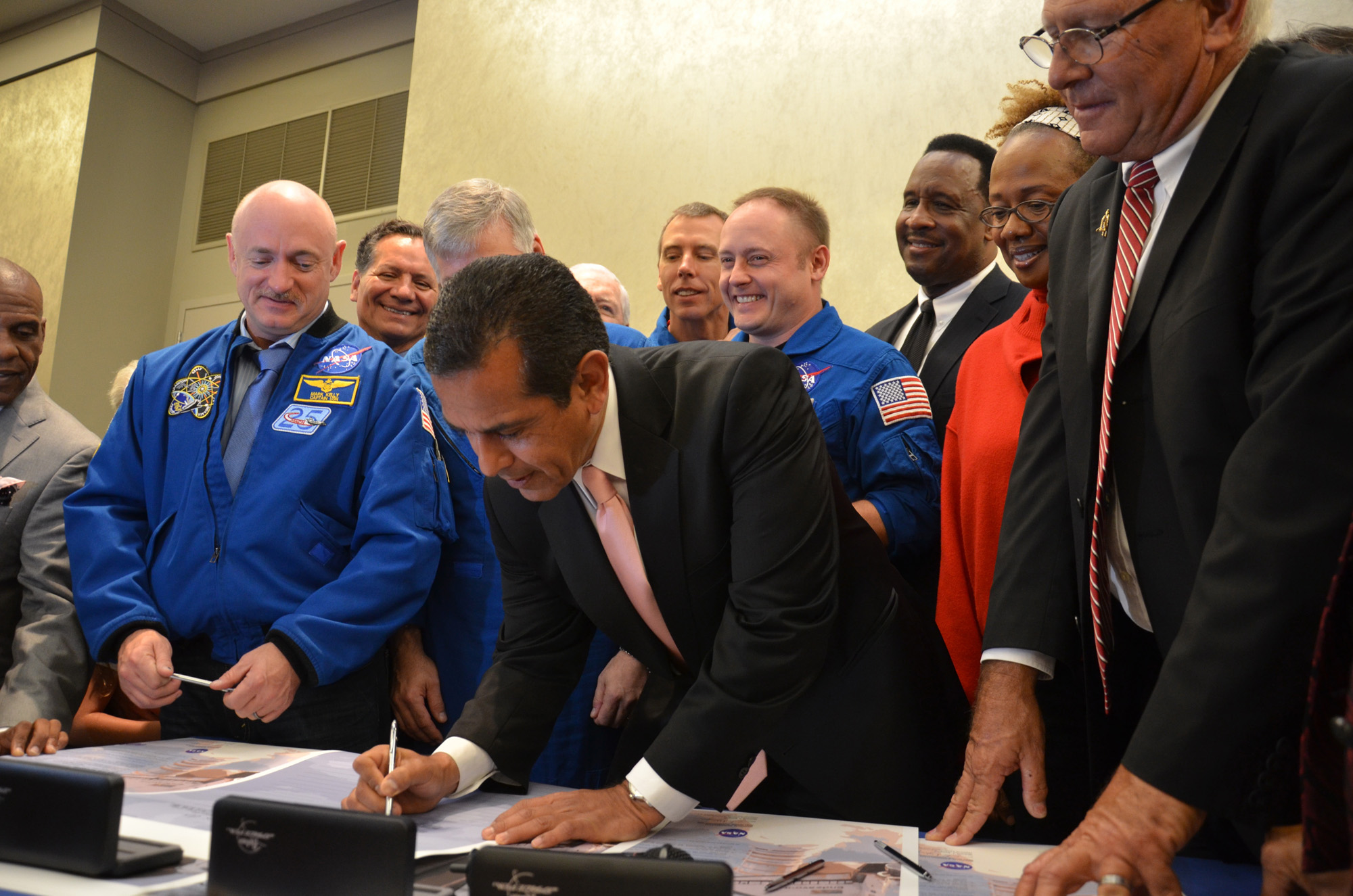NASA Hands Keys to Space Shuttle Endeavour to Calif. Museum

NASA officially signed over the ownership of Endeavour, its youngest space shuttle, to the California Science Center in Los Angeles today (Oct. 11), setting the stage for the retired spaceship's delivery to the museum next year.
Space agency officials handed over Endeavour's title during a ceremony at the science center and plan to deliver the space shuttle sometime in the second half of 2012.
"NASA is pleased to share this wonderful orbiter with the California Science Center to help inspire a new generation of explorers," NASA chief Charles Bolden said in a statement. "The next chapter in space exploration begins now, and we're standing on the shoulders of the men and women of the shuttle program to reach farther into the solar system." [NASA's Shuttle Program in Pictures: A Tribute]
The California Science Center is one of four institutions across the country selected by Bolden to serve as the permanent home for NASA's space shuttle vehicles. Bolden announced his decision on April 12 of this year, the 30th anniversary of the first space shuttle launchin 1981.
"Endeavour now will begin its new mission to stimulate an interest in science and engineering in future generations at the science center," said California Science Center president Jeffrey Rudolph.

Get the Space.com Newsletter
Breaking space news, the latest updates on rocket launches, skywatching events and more!
Endeavour flew its final space voyage in May, when the shuttle visited the International Space Station to deliver a $2 billion astrophysics experiment during NASA's STS-134 mission commanded by astronaut Mark Kelly. NASA built Endeavour to replace the shuttle Challenger, which exploded and broke apart just after liftoff in 1986 while carrying a crew of seven astronauts.
While Endeavour is destined for California, its sister ship Atlantis will be displayed at the Kennedy Space Center Visitor Complex in Florida. Discovery, the oldest and most-flown of NASA's shuttle fleet, will be sent to the Smithsonian Institution's National Air and Space Museum in Washington, D.C.
The museums had to commit to cover the $28.8 million cost of preparing and delivering a space shuttle for display.
NASA's Enterprise prototype shuttle, which was used for landing tests but never flew in space, will be sent to New York City to be displayed at the Intrepid Sea, Air & Space Museum. Enterprise is currently on display at the National Air and Space Museum's Steven F. Udvar-Hazy Center near Washington's Dulles International Airport. Enterprise will eventually be replaced by the shuttle Discovery, according to NASA's plan.
One other NASA shuttle, the Columbia orbiter, broke apart in 2003 while returning its seven-astronaut crew to Earth. Damage to the shuttle's left wing heat shielding caused the accident, NASA later found.
NASA retired its space shuttles in July after the shuttle Atlantis returned to Earth to end the 135th and final mission of the space shuttle program. That mission delivered vital supplies to the crew of the International Space Station.
Space agency engineers are currently working on Discovery, Atlantis and Endeavour to make them museum-safe, work that includes removing propellant tanks that carried toxic rocket fuel.
Follow SPACE.com for the latest in space science and exploration news on Twitter @Spacedotcom and on Facebook.
Join our Space Forums to keep talking space on the latest missions, night sky and more! And if you have a news tip, correction or comment, let us know at: community@space.com.

Tariq is the Editor-in-Chief of Space.com and joined the team in 2001, first as an intern and staff writer, and later as an editor. He covers human spaceflight, exploration and space science, as well as skywatching and entertainment. He became Space.com's Managing Editor in 2009 and Editor-in-Chief in 2019. Before joining Space.com, Tariq was a staff reporter for The Los Angeles Times covering education and city beats in La Habra, Fullerton and Huntington Beach. In October 2022, Tariq received the Harry Kolcum Award for excellence in space reporting from the National Space Club Florida Committee. He is also an Eagle Scout (yes, he has the Space Exploration merit badge) and went to Space Camp four times as a kid and a fifth time as an adult. He has journalism degrees from the University of Southern California and New York University. You can find Tariq at Space.com and as the co-host to the This Week In Space podcast with space historian Rod Pyle on the TWiT network. To see his latest project, you can follow Tariq on Twitter @tariqjmalik.









